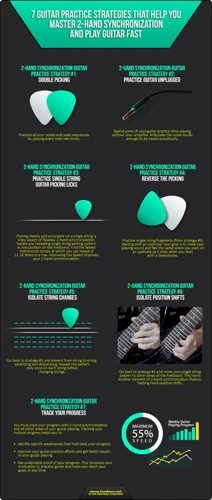Playing the guitar is a skill that requires dedication, practice, and a love for music. One of the techniques that can take your guitar playing to the next level is string skipping. String skipping involves playing notes on non-adjacent strings, creating a unique and dynamic sound that can add flair to your solos and improvisations. In this article, we will explore 5 country licks that incorporate string skipping techniques to help you expand your guitar vocabulary and enhance your playing style.
Country Lick 1: The Twangy Slide
The Twangy Slide is a classic country lick that utilizes string skipping to create a bright and lively sound. Start by placing your index finger on the 5th fret of the G string and your ring finger on the 7th fret of the high E string. Pluck the G string with a downstroke and then slide your ring finger up to the 9th fret while skipping over the B string. Finally, pluck the high E string with an upstroke to complete the lick. This technique adds a touch of twang to your playing and is a great way to kick off a country-inspired solo.
Country Lick 2: The Chicken Pickin’ Shuffle
The Chicken Pickin’ Shuffle is a fun and funky lick that combines string skipping with a percussive picking technique. Start by fretting the 7th fret of the D string with your index finger and the 9th fret of the high E string with your ring finger. Pluck the D string with a downstroke and then skip over the G string to pluck the high E string with an upstroke. Quickly mute the strings with your picking hand to create a staccato effect. Repeat this pattern in a shuffle rhythm to achieve that classic chicken pickin’ sound that is synonymous with country music.
Country Lick 3: The Double Stop Boogie
The Double Stop Boogie is a high-energy lick that incorporates double stops and string skipping to create a driving rhythm. Start by fretting the 7th fret of the D string and the 7th fret of the high E string with your index and ring fingers, respectively. Pluck both strings simultaneously with a downstroke and then skip over the G string to pluck the D string again with an upstroke. This creates a boogie-woogie feel that is perfect for adding some bounce to your country licks.
Country Lick 4: The Bluegrass Bounce
The Bluegrass Bounce is a fast-paced lick that showcases the versatility of string skipping in country music. Start by fretting the 7th fret of the G string with your index finger and the 10th fret of the high E string with your pinky. Pluck the G string with a downstroke and then skip over the B and D strings to pluck the high E string with an upstroke. This lick mimics the fast picking style of bluegrass music and is a great way to add some speed and agility to your playing.
Country Lick 5: The Honky Tonk Hammer-On
The Honky Tonk Hammer-On is a slick lick that combines string skipping with hammer-on techniques to create a smooth and seamless sound. Start by fretting the 5th fret of the D string with your index finger and the 7th fret of the high E string with your ring finger. Pluck the D string with a downstroke and then skip over the G string to hammer-on the 7th fret of the D string with your pinky. Finally, pluck the high E string with an upstroke to complete the lick. This technique adds a touch of honky-tonk flair to your playing and is perfect for adding some soulful bends to your solos.
Looking to improve your country guitar skills? Check out our articles on 10 country songs with string skipping, string skipping techniques for country guitar, incorporating string skipping into country solos, fingerpicking and Travis picking in country music, and country chords for fingerpicking for valuable tips and techniques to enhance your playing!
Conclusion
String skipping is a versatile technique that can elevate your country guitar playing to new heights. By incorporating string skipping into your licks and solos, you can create dynamic and interesting sounds that will captivate your audience and set you apart as a guitarist. Experiment with the 5 country licks outlined in this article to hone your string skipping skills and take your playing to the next level. Whether you’re a beginner looking to expand your guitar vocabulary or an experienced player seeking new inspiration, string skipping is a technique worth exploring in the realm of country music. So grab your guitar, practice these licks, and get ready to impress with your newfound string skipping prowess.


